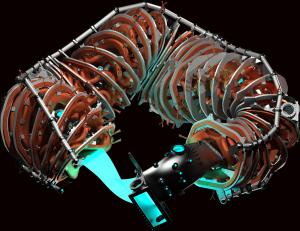Toward public-private synergies
The ascendance of these private fusion companies creates the possibility of public-private synergies. Public projects are largely oriented towards proving the scientific and industrial feasibility of fusion. Private companies, by their nature, are specifically concerned with the economic viability of harnessing fusion power for energy. However, for the global fusion community to achieve the shared goal of harnessing fusion power for electricity generation, scientific, industrial, and economic feasibility are ultimately each indispensable factors. Thus, the essential question for the fusion community over the coming years is, "how can these two sectors' specific strengths be combined to accelerate humanity's race towards harnessing fusion energy?"
ITER is providing practical experience in designing, fabricating, and assembling a fusion facility and— importantly— it is the first fusion facility to go through the process of nuclear licensing. ITER's complex multinational procurement structure has also resulted in the development of fusion technology supply chains, and is contributing to the creation of a diverse, global, and experienced fusion workforce. The private sector has already begun to utilize these linkages in constructing their fusion devices, and if successful, will continue to do so at larger scales as they build more and more complex machines.
At the international level, the IAEA recently announced the creation of the World Fusion Energy Group, an initiative to encourage cross-sector collaboration in the fusion industry. Announced at the recent IAEA Fusion Energy Conference, the group, according to Director General Rafael Mariano Grossi, aims to "bring together not just scientists and engineers from laboratories and experimental centres, but also policy makers, financiers, regulators and private companies" to accelerate the eventual achievement of commercial fusion energy production. The expansion in this type of cross-sector collaborative thinking reflects an emerging recognition that exploiting the synergies between the public and private sectors will be necessary to harness fusion energy. As the recognized global leader in multinational fusion collaboration, ITER will certainly have a critical role to play.





